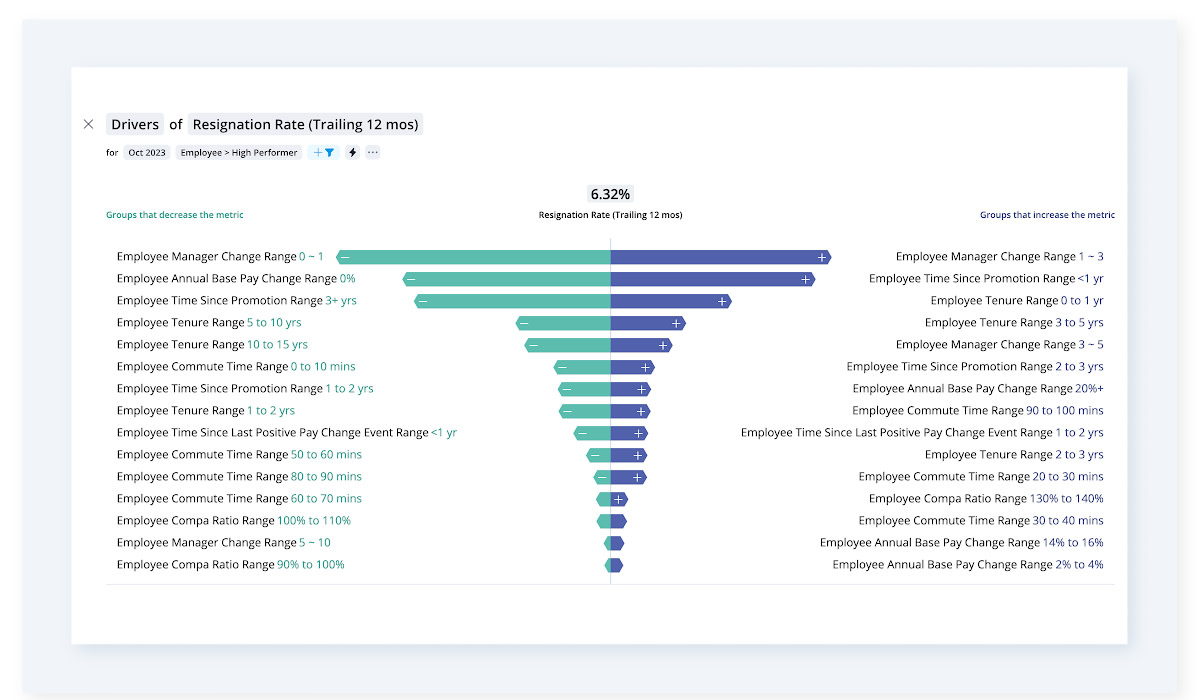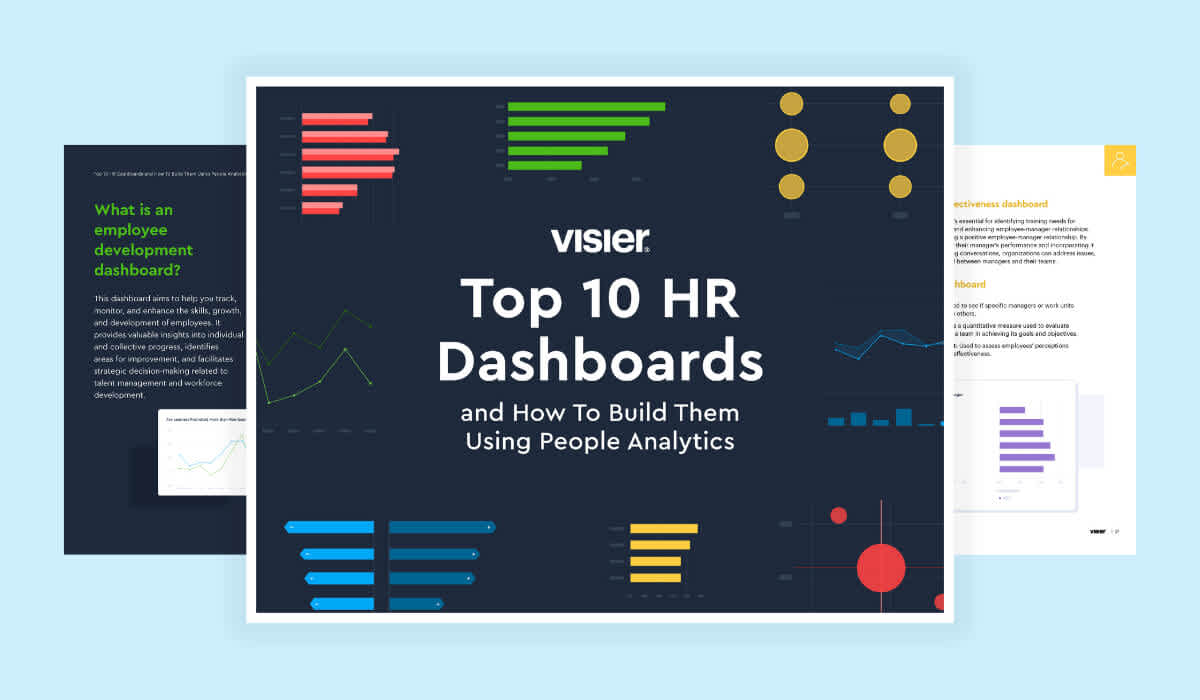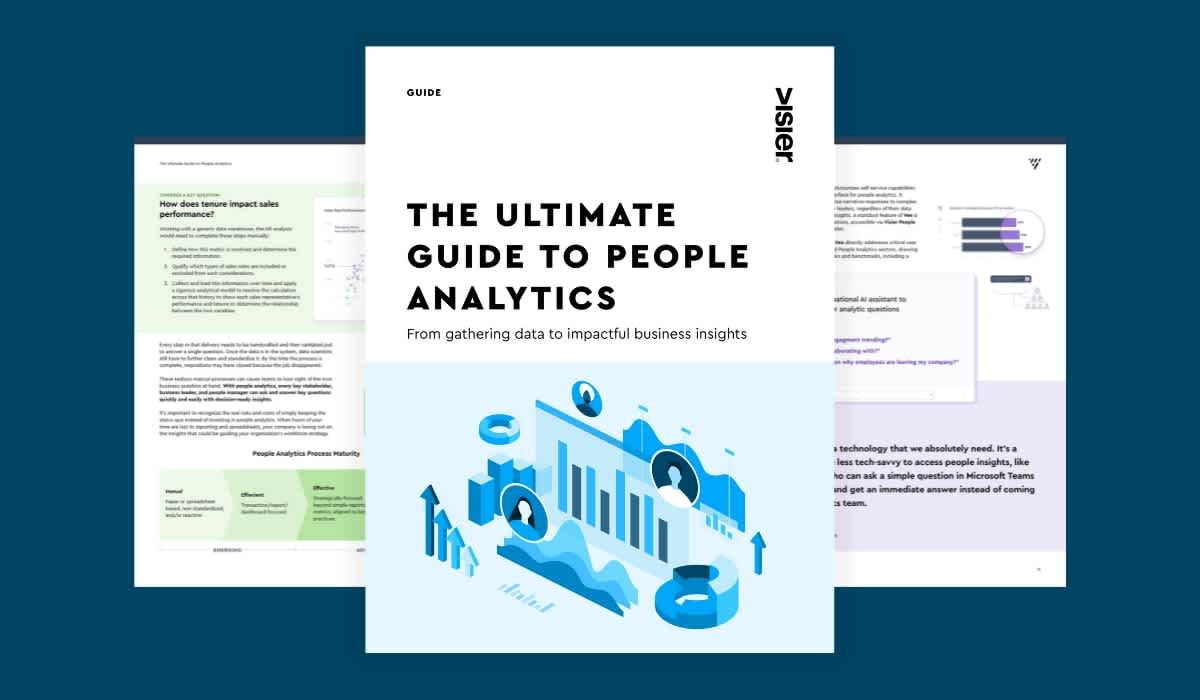3 Ways People Analytics Ends Employee Retention Guesswork
Discover key employee retention analytics HR leaders need to track when tackling turnover and building powerful retention programs.

In this article, discover key employee retention analytics HR leaders need to track when tackling turnover, and how people analytics can help uncover the relevant insights to build powerful retention programs.
It turns out that HR shares a passion with economists. Hiring, vacancies and turnover are critical measures on both the state of the economy and the health of the organization. While most organizations will focus on improving their ability to hire, the savvy ones know that retaining talent is just as critical.

Every organization has the resiliency to absorb talent loss, but that resiliency has a limit before serious business impacts start occurring. Identifying the why, where, and who of flight risks before they appear is the only way to proactively avoid losses in productivity, revenue, and profits.
For many organizations, voluntary turnover costs millions of dollars. The total cost of replacing an individual employee can range from one-half to two times the employee's annual salary, according to Gallup.

Use an employee retention dashboard to keep a pulse on resignation trends and risks in the organization
However, when well-intended employee retention tactics are applied to everyone in the organization, their results can be limited, doing little to alleviate flight risk. We would never consider a “peanut butter” strategy for compensation adjustments, but retention programs are too often spread thin across the organization, which increases costs and decreases effectiveness.
The answer? Rather than crafting across-the-board retention programs, HR organizations need to sharpen their focus and apply dollars where they’ll have the most impact. This requires businesses to be far more sophisticated in uncovering the root causes of turnover, and to adopt more analytical approaches that increase their ability to identify flight risk factors and arm business partners with the data to drive action.
Here are three key questions HR leaders need to ask when tackling turnover and how analytics can help uncover the relevant insights:
Question 1: Where is the greatest business risk?
Before designing retention initiatives, you must first determine the impact of churn. To do this, drill down to understand the consequences of losing talent in different departments, roles, functions, or geographies. After all, what counts as high turnover in one area may be normal in another. Ultimately, the greatest business risk exists where exceptionally high turnover exists for talent with a high impact on business outcomes.
For example, The Auto Club Group (ACG) noticed that when specific roles became vacant, it significantly impeded regular business operations. These “high-impact roles” needed to be monitored to ensure low turnover and quick vacancy planning. The team used data points in Visier to help build a “critical roles” model and were able to identify the high-impact roles to understand how, where, when, and why turnover was happening.
ACG has seen a significant decrease in turnover for these positions helping to keep business operations stable which, in turn, allows them to continue serving their members wherever and whenever they need support.

Question 2: Why are people leaving? Why are they staying?
To tackle flight risk effectively, it’s also important to uncover the why of the turnover problem.
For example, Printpack, a packaging company specializing in the food, beverage, pharmaceutical, and agricultural industries, needed a way to understand why people were leaving so it could pivot its hiring and retention strategies. Using people analytics, they were able to spot where the retention issue was most prevalent. They quickly identified that the employees in the zero-to-one-year tenure grouping were leaving at faster rates. The result: they reduced turnover by 1/3 in the zero-to-one-year employee population.

Dig into drivers of resignation rates to understand why employees exit
Machine-learning techniques can scan hundreds of employee attributes to uncover hidden patterns behind increasing or decreasing resignations. Trained on thousands of historical resignations, these advanced analytical approaches often find the patterns that humans miss: Unsupportive managers, excessive commute times, lack of training, poor onboarding, and other factors that may be difficult for leaders to observe.
With an analytics platform that pulls together records from the HRIS, talent management, applicant tracking, engagement, learning management, and other HR systems and connects the data, the patterns subsequently uncovered can span the employee lifecycle. The processes of hiring, performance management, compensation, and training shouldn’t exist in silos, and neither should the analysis of the data these processes collect.
Question 3: Who exactly is likely to leave?
Ultimately, machine learning algorithms that bring data together across the employee lifecycle can go beyond finding the patterns of why people are leaving, and make predictions about who presents the greatest flight risk. Knowing who is likely to leave is incredibly important because it allows you to make the most targeted action plans to retain talent. Armed with these insights, you can create Individual retention plans for key talent that address factors specific to them.
Predicting flight risk can involve some pretty sophisticated technology and techniques, but it need not be rocket science: Ultimately, it’s about building a profile of the organization’s talent who left in the past, which can then be used to identify similar characteristics in existing employees.
Advanced “in-memory” people analytics applications make it easy to run tailored algorithms to help identify flight risk. Many predictive technologies are based on simple regressions or static models instead of machine learning, which involves continual adaptation and refinement.
One particular machine learning technique, called “random forests,” examines historical employee data and employee events like promotions, resignations, and internal hires to learn a set of patterns and construct decision trees that help predict the occurrence of an event. Data scientists have proven this to be up to 17 times more accurate than other methods.

Use people analytics to identify individual employees at risk of resigning to create targeted action plans.
The end of retention guesswork
“We see some problems as just part of the fabric of everyday life, inevitable and immutable, and miss spotting the potential to do something about them,” writes business journalist Amanda Lang in her book, The Power of Why. High levels of attrition need not be accepted as a fact of life.
Armed with workforce data, HR can tackle turnover with a razor-sharp focus on the issues at hand. A more data-driven approach makes it easier to quantify the impact of key programs, helping HR garner the kind of executive support that is crucial to retention success.



